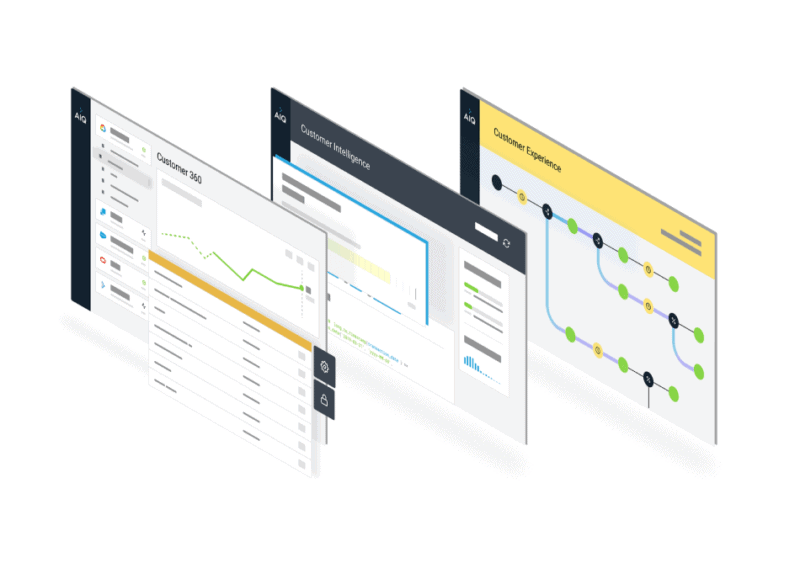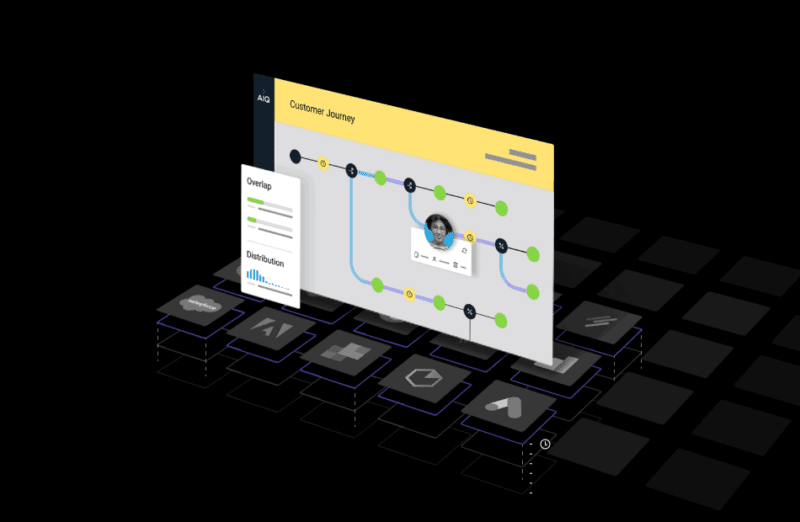From Data Analytics to Machine Learning: How to Master Your Analytical Maturity

“Why is data analysis important?” isn’t a question you’re likely to hear from the c-suite anytime soon.
More than 40% of brands say they plan to increase their data-driven marketing budgets and 64% of executives strongly agree that data-driven marketing is essential. But you may be surprised by how many business leaders struggle to define what “data-driven” actually means.
While many companies are already looking ahead to an artificial intelligence-powered future — in fact, leading marketers are almost twice as likely to champion the use of machine learning than industry laggards — there’s often a fundamental knowledge gap regarding what it takes to get there.
Leaders may understand why data analytics is important, but it’s still all too easy to get lost in a sea of tools and terminology. To maximize the value of big data and drive results, brands must start by recognizing the key components of business data analysis and decision-making.
Only after you understand the stages of analytical maturity and your place among them can you refine your business strategy — and the technology you need to support it.

Data Analysis for Business Decisions
There are four key components of data analysis in a business context:
- Data analytics
- Statistics
- Predictive modeling
- Machine learning
Each of these components serves the primary goal of data analysis for business: continuous data-driven optimization of your strategies.
It starts with data analytics — the exploratory analysis of data to help you understand the current state of your business and form a hypothesis about what to do next. Statistics is how you then test that hypothesis and interpret the results of your actions. This may seem rudimentary, but according to a recent survey of CMOs, only approximately 38% of marketing projects are informed by analytics.
Once you have the basic building blocks in place, you can move on to predictive modeling — the process of seeking to predict future outcomes based on statistical analysis of historical data. And when you’re ready to scale up your analytical maturity to the highest level, you can use machine learning — the branch of artificial intelligence based on systems learning from data over time with minimal human intervention — to automate model building.
The Different Stages of Analytical Maturity
There are five primary stages of organizational analytical maturity:
- Exploration
- Visualization
- Testing
- Prediction
- Predictive analytics at scale
Each of these stages corresponds to different roles, responsibilities and processes. Exploration can be conducted in even the most basic analytic environment, managed by a data analyst using spreadsheets and SQL. Visualization — when reports are being designed and shared across your organization — typically requires analysts to team up with a business intelligence specialist who can help them conceptualize trends using data visualization software.
Next comes testing, when hypotheses are being evaluated against business as usual. This requires analysts and business intelligence specialists to collaborate with a statistician who can run rigorous tests and recommend actions based on the results, usually by using statistical analysis software that will help determine how confident you should be in the results of your testing and if you gathered enough evidence to roll out new strategies.
Predictive customer scores — which are built on the results of the tests and/or your historical data — are then leveraged in the prediction stage, when a data scientist takes the work of data analysts, business intelligence specialists and statisticians to develop and test models. Finally, when multiple predictive customer scores are being used consistently for a variety of business decision problems, machine learning engineers are added into the mix. During the predictive analytics at scale stage, these experts work with their colleagues to develop and operationalize scalable models with machine learning software.
When you stop and take a look at what’s required to reach true analytical maturity — all the time, planning and resources — it becomes easier to understand why so many businesses struggle to get there.
As of 2020, 65% of marketing leaders said they couldn’t quantitatively prove the impact of their efforts. And these brands aren’t just failing to prove the value of their strategic decisions — they’re losing out on the business-critical benefits of data analysis at every level.

The Business Benefits of Analytical Maturity
Each component of data analysis opens the door to new revenue opportunities and the ability to capitalize on them. And the higher your level of analytical maturity, the greater the opportunity becomes.
For example, data analytics helps you generate new ideas, such as updating your email send times based on when different customer segments are most likely to open them. Statistics helps you verify your decision-making, enabling you to test alternative send times for different segments to see if there’s a lift in open rates. Predictive modeling helps you expand your strategy to other customer segments, allowing you to predict the best times to send emails to all customers based on their profiles and behaviors. And machine learning helps you optimize your strategy over time — automatically and across your entire customer base — by updating your model as you receive fresh data from new and existing customers.
But the positive business outcomes driven by analytical maturity go much further than email strategy. They can be felt across your entire organization, from marketing to customer service to product development.
Which communications drum up the most engagement? Which digital experiences drive long-term loyalty? Which customer support strategies produce the highest customer satisfaction? Which product features drive adoption and retention among target audiences?
Data analysis will help you answer these questions and more, but only if your data is accurate, accessible and actionable. More than 50% of companies say lack of data quality and completeness is their biggest barrier to data-driven marketing. Meanwhile, 46% highlighted insufficient technology as their greatest challenge.
In order to transform information into actionable insights, you need tools that empower your business to focus on leveraging data, not wrangling it. Customer data platforms (CDP) provide the scalability, flexibility and connectivity enterprise companies need to take raw, siloed data and transform it into a comprehensive view of all customers. With a single source of customer intelligence truth to rally around, users across your organization can self-serve the data they need to enhance and expand revenue streams, drive operational efficiency and improve customer experience.
The question is no longer, “why is data analysis important?” It’s “how do we take our data analysis to the next level?”
Learn More
Download our CDP Market Guide or contact our CDP experts to learn more about CDPs, how to optimize data analysis for business decisions and the role technology plays in helping you master analytical maturity.





